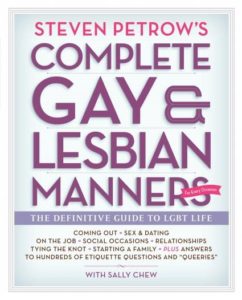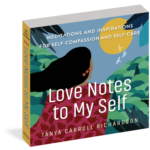 National Coming Out Day is observed around the world every year on October 11 (except in the UK, where it’s October 12). The holiday is a special day for the recognition and discussion of LGBT (lesbian, gay, bisexual, transgender) life and rights. Many people also embrace the day as an occasion to “come out,” or open up about their sexual orientation or gender identity, to their friends and family.
National Coming Out Day is observed around the world every year on October 11 (except in the UK, where it’s October 12). The holiday is a special day for the recognition and discussion of LGBT (lesbian, gay, bisexual, transgender) life and rights. Many people also embrace the day as an occasion to “come out,” or open up about their sexual orientation or gender identity, to their friends and family.
Coming Out Day is a happy occasion, but it can also bring up some questions—not just about coming out, but about LGBT issues in general. Fortunately we’re able to turn to resident gay manners expert Steven Petrow, author of Steven Petrow’s Complete Gay & Lesbian Manners, for some tips on navigating the ever-changing waters of LGBT life.
Below is a primer on coming out from the Coming Out chapter in Complete Gay & Lesbian Manners (also available as a short e-book, for sale through many online retailers). Arm yourself with these tips from a pro, plus confidence and a positive attitude—and make this the best National Coming Out Day yet.
Taking the First Steps
Coming out is not about “flaunting” anything; it’s about telling people something very important about who you are. For every social butterfly who comes out on Facebook by updating her status and every guy who has an in-depth coming-out conversation with his parents while wearing a T-shirt that says “I’m queer! Get used to it,” there are plenty of people who prefer to make their sexual orientation or gender identity known in quieter, less assertive ways. No approach is better than another; in fact, how you come out is among the most personal decisions you’ll ever make, and you may actually deploy different strategies at different times in your life or with different people.
Whom to Tell First
Most people come out first to a close friend, often someone who is LGBT. Whether you spill the beans in one huge confessional or just mention your sexuality or gender identity in passing, treat whomever you tell with the same respect and consideration you’ll be expecting in return. It’s important that you trust this confidante, whether he’s your best friend, a teacher, a work colleague, a professional counselor, or someone in your family. A recent poll on my website showed that nearly half of the respondents first came out to an LGBT friend, while a quarter started with a straight friend. Only one in eight told a family member first.
These four steps can be helpful:
- Make a plan: Ask your confidante to go out for coffee, take a quiet walk, or meet somewhere you will have privacy and feel comfortable. If there’s any chance at all that the person might have a hostile or violent response, take that into consideration when you choose where to go. Explain beforehand that you have something personal you’d like to discuss, but don’t make it sound too serious. Coming out is not like revealing a serious disease, an intractable problem, or a crime (by the way, you can “acknowledge” your homosexuality but don’t “admit” it—“admitting” is something you do when a wrongdoing is involved, and there’s nothing at all the matter with your acknowledging who you really are).
- Consider all possible reactions: How your friend responds isn’t really up to you—although how you set up the conversation can help increase the likelihood of a favorable reaction. Usually, respect and trust beget respect and trust. Expect the best: acceptance, a warm embrace, words of support, as well as love and continued friendship. But prepare for the worst: rejection, anger, even the loss of the relationship. You may be equally surprised to find a friend had no idea, or to hear him say, “Oh really? That’s no big deal,” or, “I knew it all along.” Each time you come out, you will have a better sense of how to prepare for the next time.
- Do your research: Although it’s not your job to educate people about what being gay or transgender means, some people you come out to may have questions, and knowing the answers can help you feel more confident about how you respond. “No, it’s not a choice,” you might need to say if asked why you are gay. “When did you choose to be straight” if further pressed, or, “Mom, I do hope you’ll be a grandparent one day. There are lots of ways for LGBT people to have kids.” If you can’t find what you’re looking for online, contact a group like PFLAG (Parents, Families and Friends of Lesbians and Gays) or GLSEN (Gay, Lesbian and Straight Education Network). Hold on to the phone number or URL in case you end up wanting to share it with the person you’re coming out to. (For more information, visit www.gaymanners.com.)
- Keep it simple: You might start off with, “We’ve known each other for a very long time and there’s something personal about me that I’d like you to know.” Or, “I want you to know that I’m a lesbian.” Or even just, “I have a girlfriend.” No need to spill your guts or make a tortured declaration. The more confident and together you sound, the more likely you’ll get a positive response.
—————————————————————————————————————-
Keep up with Steven online! Visit GayManners.com to read the latest news and ask Steven your own LGBT etiquette questions. You can follow him on Twitter at @gaymanners, where all week he’s tweeting tips for coming out, what to say when a friend comes out to you, and more.




No Comments